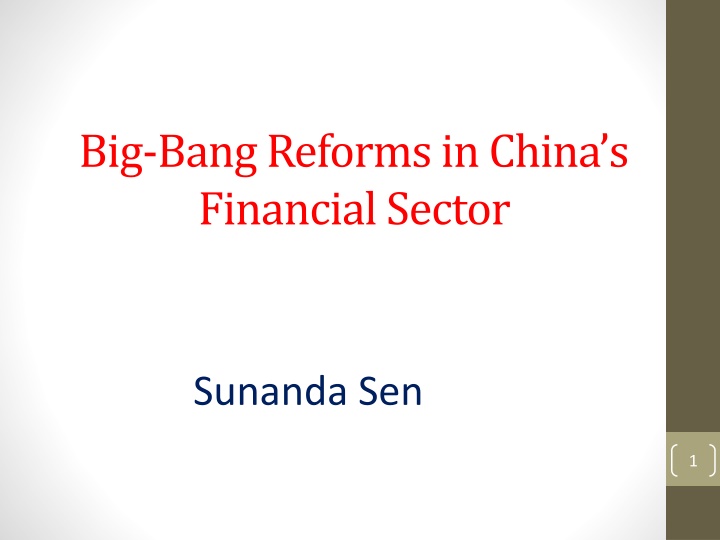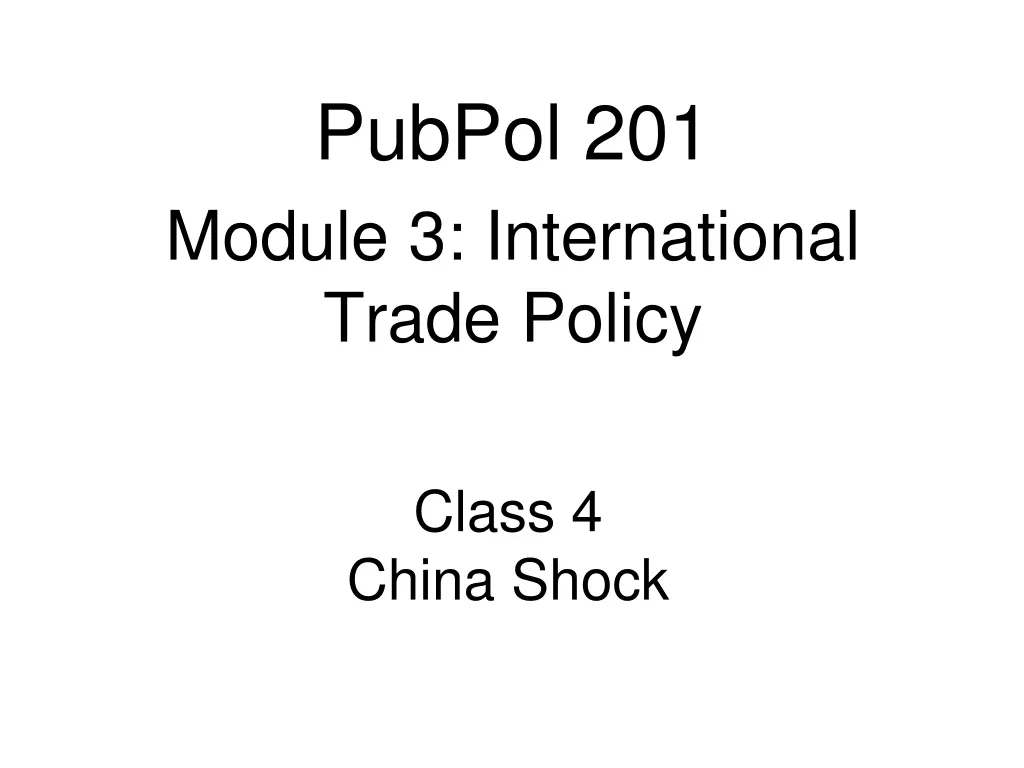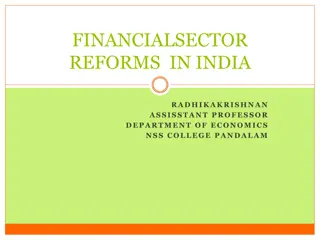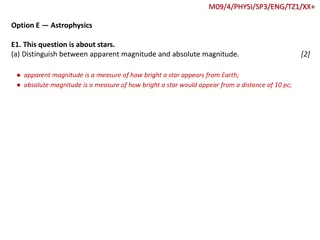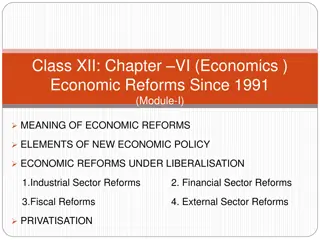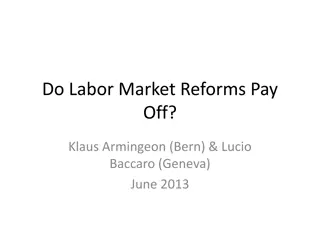Big Bang Reforms in China's Financial Sector by Sunanda Sen
This article discusses significant reforms in China's financial sector, including changes in capital account regulation, balance of payments components, financial instabilities, and offshore centers like Shanghai FTZ. The reforms cover topics such as exchange rate adjustments, deregulated interest rates, RMB convertibility, and the impact on China's Balance of Payments.
Download Presentation

Please find below an Image/Link to download the presentation.
The content on the website is provided AS IS for your information and personal use only. It may not be sold, licensed, or shared on other websites without obtaining consent from the author.If you encounter any issues during the download, it is possible that the publisher has removed the file from their server.
You are allowed to download the files provided on this website for personal or commercial use, subject to the condition that they are used lawfully. All files are the property of their respective owners.
The content on the website is provided AS IS for your information and personal use only. It may not be sold, licensed, or shared on other websites without obtaining consent from the author.
E N D
Presentation Transcript
Big-Bang Reforms in Chinas Financial Sector Sunanda Sen 1
Chinas capital Account Regulation: Major Breaks 2005: End of fixed official dollar rate for RMB at 8.27 per USD 2007:Private holdings of foreign currency allowed 2011 (September) two-way floating of RMB in market 2012 (April): widening of daily trading limit of currency rate from 0.5% to 1%. 2013(November) : Proposed reforms include de- regulated interest rates for China as a whole, Shanghai FTZ with RMB convertibility and relaxed banking regulations 2
Components of China s Balance of Payments: Components of China's Balance of Payments 1,500 1,000 500 investment income balance 100million US dollar capital & financial account balance 0 other investment balance 2011Q2 2011Q3 2011Q4 2012Q1 2012Q2 2012Q3 2012Q4 2013Q1 2013Q2 trade credits balance loans balance -500 foreign exchange balance -1,000 -1,500 3 -2,000
Financial reforms and the built-in instabilities a) b) Drop in financial account, turning negative Due to reversal of other investments due to expectations of RMB rate change) with (i) drop in short term trade credits ( advanced and delayed),(ii) negative balance in loans advanced (iii)drop in foreign currency and deposits held by banks and (iv) negative flows of foreign exchange balance (with proportionate additions to stocks of reserves) Rising net portfolio liabilities ( possibilities of bunching short term outflows) d) A deteriorating BoP signaled by (i)movements in exchange rates with depreciations between April and August 2012 from RMB 6.30 to 6.42 per dollar .caused by currency speculation with two-way floating & widening of band in 2011 and private holdings since 2007. (ii) Drop in Financial and Capital Account (ii) Negative investment income flows ( with higher rates in China compared to those abroad) e) China s BoP no longer propped by twin surpluses . c) 4
Offshore centres, Shanghai FTZ and two-way convertibility of RMB Other offshore centres already had introduced currency convertibility which include: Hongkong , London and Singapore Possibilities of arbitrage along trade channels as well as capital flows opened up using the Hongkong market for the slightly higher rate of RMB in terms of USD. Bonds ( Dimsum bonds ) issued in Hongkong in RMB opened up channels of investment by foreigners in China s capital market Limits of minimum capital regulation to be removed in Shanhai .opens relocation of banks De-regulation of interest rates may push up rates may relocate deposits 5
Exchange rates of USD in RMB Calculations of CNH by author based on 1 Hk$=7.75 RMB Exchange rates of USD in Mainland China and in Hongkong 6.9 6.8 6.7 6.6 6.5 RMB CNY 6.4 CNH 6.3 6.2 6.1 6 5.9 2008 2009 2010 2011 2012 6
Some issues concerning financial stability in China Indications of destabilizing financial flows : a) larger flows of portfolio capital , b) use of Wealth Fund by banks as alternate channels of investments, especially in currency markets and in real estates, c) channels of shadow banking with derivatives, d) Arbitrage opportunities across Hongkong and Mainland China e) Speculation on currency rates Are these a path to RMB internationalization? Is China and rest of world ready to face that without risking instability? Can China continue with its model of guided finance in the face of the de-stabilizing forces? 8
